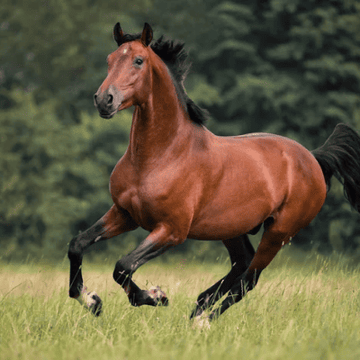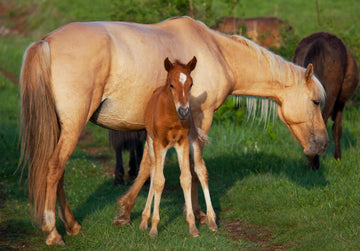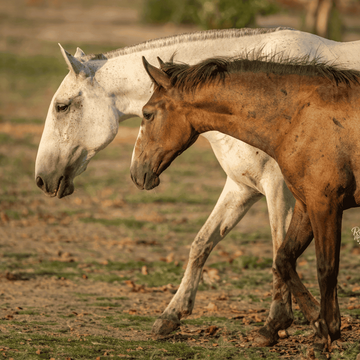In general, the nutrition of breeding stallions is still relatively overlooked in daily practice. However, today we know that a stallion’s diet can significantly influence both performance and fertility.
To this understanding, we must also add that many breeding stallions also participate in athletic activities, which calls for increased attention to their dietary management.
Breeding Season
Stallions should begin the breeding season in adequate body condition, which should be monitored and adjusted throughout the period to meet their evolving nutritional needs.
-
Thin stallions lack body reserves, which can compromise performance and fertility.
-
Obese stallions are also undesirable, as excess weight is often associated with reduced libido and fertility, and may lead to joint overload, potentially limiting physical capability.
Feeding Management
Stallions with access to high-quality pasture may have their nutritional needs met solely through grazing. However, depending on pasture quality, it is often necessary to supplement with a mineral and multivitamin complex.
BALANCE
For stabled stallions, a diet should include adequate forage (both in quality and quantity) and a balanced complementary feed. Energy requirements tend to increase during the breeding season—especially when combined with physical activity—so the use of a specific feed during this period is recommended.
EPOLDRIN
For stallions that are prone to obesity, pasture access should be limited, and they should be given a low-calorie complementary feed that provides essential vitamins and minerals, alongside dry forage.
BALANCE
For stallions that struggle to maintain body condition, ad libitum forage should be provided, complemented with an appropriate compound feed and, if needed, an additional fat source. Oils are an efficient way to safely increase caloric intake. For breeding stallions, omega-3-rich oils, such as linseed oil or fish oil, are preferable, as they have been linked to improved spermatogenesis.
Vitamin E Requirements
Stallions have increased Vitamin E requirements during the breeding season (from 500 IU to 800 IU, NRC 2007). Supplementation should be considered, especially in cases without pasture access, as Vitamin E levels decrease in hay during storage. Adequate Vitamin E intake helps prevent oxidative damage to sperm cells, thereby enhancing fertility.
VIT E+
Special Considerations
Older stallions, nervous individuals, or those with high activity levels may be more prone to weight loss throughout the breeding season. These cases can benefit from a feed with higher fat content.
NATURE MASH
Summary
Understanding and meeting the specific nutritional needs of breeding stallions brings clear reproductive benefits. Proper feeding supports fertility, performance, and long-term health.



